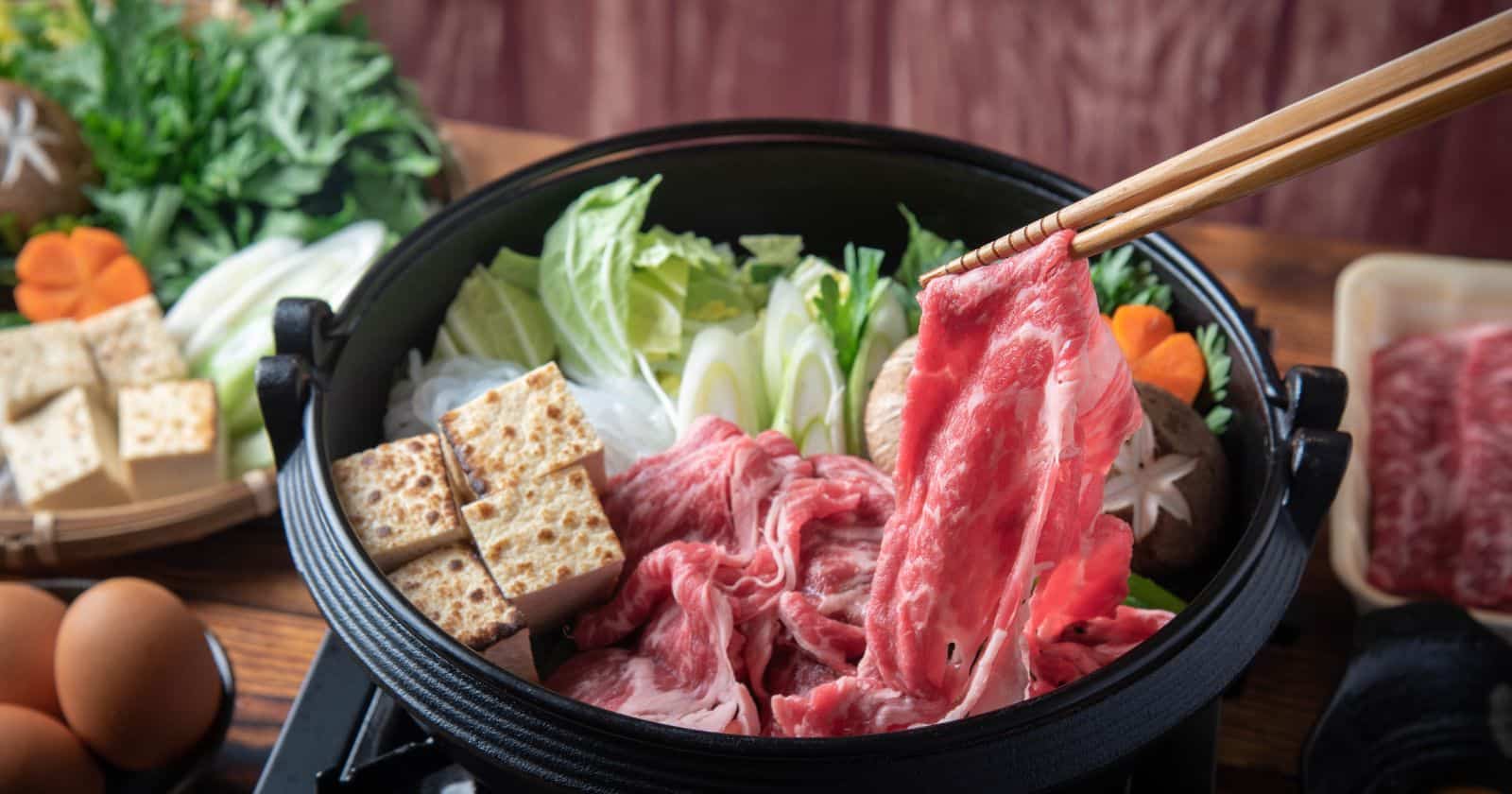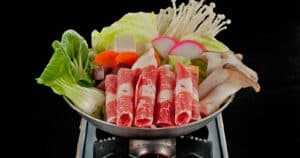Nothing brings people together around the table like a steaming hot pot filled with delicious ingredients. But in the midst of the laughter and fun, a worry may cross your mind – can you actually get sick from hot pot? With raw foods cooking right in the broth, it seems like an infection waiting to happen.
As a hot pot fan, I’ve certainly worried about this. Hot pots seem like breeding grounds for dangerous bacteria. But before you pass on this tasty tradition, know that you can take steps to enjoy hot pot safely.
The broth, ingredients, and cooking methods all play a role in hot pot food safety. From cross-contamination of raw foods to improper cooking temperatures, there are risks. But by following some simple guidelines, you can still savor flavorful hot pot without the side of sickness.
In this article, I’ll walk through the health risks of hot pots and give tips to avoid foodborne illness. Take the right precautions, and you can feel confident that hot pot night will end in full bellies instead of bacterial infections. Let’s dish about how to eat this meal safely!
Dangers of Eating Hot Pot
What exactly makes hot pot a potential food poisoning risk? Here are some of the hazards:
Cross-Contamination
- Raw meat and seafood harbor dangerous bacteria.
- Dipping these items in communal broth spreads germs.
- Other cooked foods now exposed to contamination.
Undercooking
- Ingredients added gradually make it hard to track cook times.
- Meat and eggs not cooked to proper temperatures.
- Bacteria can survive and cause illness.
Reusing Broth
- Broth stays simmering for prolonged periods.
- Old broth reused for multiple rounds of cooking.
- Bacteria accumulate and multiply over time.
Food Handling
- Multiple people handling cooking tools and ingredients.
- Unclean utensils reintroduce germs to broth.
- Poor personal hygiene spreads illness-causing germs.
These hazards demonstrate why caution is needed when enjoying hot pot. But a few simple practices can drastically reduce your risk.
How to Prevent Getting Sick From Hot Pot
You can take measures to avoid foodborne illness and safely enjoy community hot pot:
Cook Thoroughly
- Cook meats like beef and chicken until well done.
- Bring broth back to a boil after adding raw items.
- Heat eggs until solidly cooked through.
Separate Raw and Cooked
- Store raw meats separately from other ingredients.
- Cook raw meats and seafood first.
- Remove cooked items immediately after cooking.
Use Fresh Broth
- Discard broth once it looks murky or greasy.
- Avoid reusing old broth for subsequent rounds.
- Prepare a fresh batch of broth each time.
Practice Proper Hygiene
- Wash hands thoroughly before and after handling food.
- Use different utensils for raw and cooked foods.
- Disinfect cooking surfaces before and after hot pot.
Following basic food safety guidelines helps reduce the risks of hot pot and let you feel at ease while enjoying this fun, communal dining experience.
Foods to Cook First and Avoid Cross-Contamination
To limit cross-contamination when cooking hot pot, remember:
Cook These Items First
- Raw meats – Beef, pork, chicken should be cooked fully before other foods.
- Shellfish – Shrimp, clams, mussels also have high bacterial risk.
- Eggs – Crack directly into simmering broth and cook through.
Avoid Cross-Contamination
- Use different utensils for raw meats vs. cooked items.
- Keep raw meats on separate plates away from other ingredients.
- Remove cooked items immediately and set aside separately.
By cooking high risk items first and keeping them separated, you prevent their bacteria from spreading via shared cooking tools, surfaces or splashing broth.
Cooking Hot Pot at Home vs. Restaurant
Is it safer to cook hot pot at home or order it at a restaurant? Here’s the breakdown:
Restaurant Hot Pot
Pros
- Broth is prepared with health codes in mind.
- Ingredients purchased from reputable suppliers.
- Staff trained in food safety practices.
Cons
- Difficult to monitor exact cook times.
- Utensils used communally.
- Risk from other diners with poor hygiene.
Home Hot Pot
Pros
- Control over ingredient freshness and cook times.
- Monitoring cross-contamination is easier.
- Only eating food you prepared.
Cons
- Home cooks may be less knowledgeable of risks.
- Home kitchens typically less sanitary than restaurants.
- Harder to maintain consistent broth temperature.
No matter where you indulge in hot pot, following safe prep and cooking practices reduces your chance of foodborne illness.
Foods to Avoid Putting in Hot Pot
Stick to cooking items that need thorough heating or brief dipping in hot pots. Avoid adding:
- Leafy greens – Spinach, lettuce can harbor germs in folds and not cook fully.
- Fresh herbs – Cilantro, basil don’t need cooking and simply introduce more germs.
- Sprouts – High risk for bacterial contamination even after cooking.
- Raw eggs – Salmonella risk; crack eggs directly into simmering broth.
- Undercooked meat or seafood – Always cook thoroughly before eating.
- Old broth – Discard and make fresh each time to limit bacterial growth.
Following basic food safety guidelines helps reduce the risks of hot pot and let you feel at ease while enjoying this fun, communal dining experience.
Signs You Might Be Sick From Hot Pot
Be aware of these symptoms that could signal food poisoning from hot pot:
- Nausea and vomiting
- Diarrhea
- Fever and chills
- Stomach cramps
- Fatigue and body aches
Symptoms typically begin 12-36 hours after eating contaminated food. Seek medical care if they are severe or accompanied by:
- Bloody stool
- Prolonged vomiting
- High fever
- Signs of dehydration
Getting sick after hot pot may indicate it was improperly handled or cooked. Always adhere to safety guidelines to avoid foodborne illness.
The Verdict: Is Hot Pot Safe?
Yes, you can feel confident eating hot pot as long as safety precautions are taken. The unique communal and progressive cooking process does come with risks. But following these safe cooking practices reduces the chance of contamination and illness:
- Cook meats thoroughly and separate from other ingredients.
- Maintain broth at a simmer and use fresh each time.
- Practice good personal and kitchen hygiene when prepping.
- Avoid cross-contamination of utensils, surfaces and foods.
While hot pot does require extra care, you can still enjoy this interactive dining experience safely. Taking a few basic precautions gives you peace of mind and allows you to indulge in this delicious tradition without getting sick.
Frequently Asked Questions
1. Can you get sick from hot pot if you use a divided pot to separate raw and cooked foods?
Yes, there is still risk of illness if broth splashes from one side to the other. Best practice is cooking meats first and removing cooked items to separate plates.
2. What if the hot pot broth isn’t boiling by the time I add ingredients?
It’s crucial to bring the broth back up to a simmer after adding raw meats and eggs to ensure thorough cooking. Do not eat partially cooked foods.
3. How long can I reuse hot pot broth before it becomes unsafe?
It’s best to discard and make fresh broth each time you cook hot pot to limit bacterial growth between uses. Don’t reuse broth more than once.
4. Can hot pot cause severe food poisoning?
While most cases cause gastrointestinal distress, vulnerable groups like young children, elderly and those with compromised immunity are at risk of more severe illness from bacteria in hot pot.
5. If I feel sick after eating hot pot, what should I do?
Seek medical care if you have bloody stool, prolonged vomiting, high fever, or signs of dehydration. Ensure you drink fluids and rest. Notify the restaurant or others who ate the hot pot as well.





